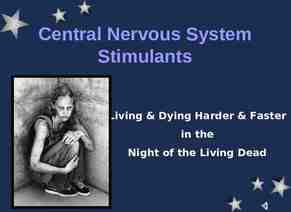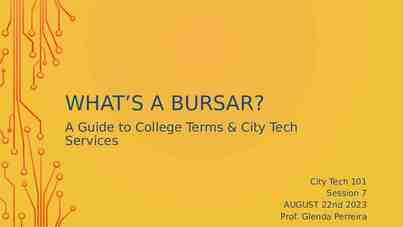Third Parties: What role do they play in American politics?
37 Slides4.57 MB
Third Parties: What role do they play in American politics? Ross Perot: 1992, 1996 Ralph Nader: 2000, 2004
Warm-Up: The Government Club T-Shirt Today, we will be selecting the color for the new government club T-shirt. The choices, as determined by early voting, are blue and yellow. Which would you vote for?
Third Party We have a problem. Red, who was eliminated during the early voting has made a comeback as the T-shirt color. What might the supporters of Blue and Yellow do?
Ideas: Either of the parties can absorb red and become purple or orange. Either party can use red for printing or design. The parties can ignore red.
Third Party Any political party organized in at least a few states, other than the two current leading parties Jesse Ventura, Independent Governor of Minnesota, 19992003
History of American Third Parties Third Parties in the U.S. receive great attention, but in fact “have not assumed the importance that all the academic attention on them suggests.”
History of American Third Parties No minor third party as ever come close to winning the presidency Only eight third party candidates have won any electoral votes Only five, including Theodore Roosevelt in 1912 and Ross Perot in 1992 have won more than 10% of the popular vote
Formation and Role of Third Parties Third parties influence elections by revealing sectional and political divides and bringing light to new issues. Third Parties usually form around a social cause and social activists. A third party neglected by the two major parties is able to affect the electorate more than if their views
Types of Third Parties
Sectional Parties Example: Strom Thurmond and the Dixiecrat Party ran on a segregationist platform in 1948
Economic Protest Parties Example: James Weaver and the Populist Party won over 1 million popular votes and 22 electoral votes in 1892
Ideology Parties Examples: Socialist, Communist, and Libertarian Parties Libertarian Party 2000 campaign ad
Charismatic Personality Parties Example: Theodore Roosevelt and the Progressive Bull Moose Party in 1912
Specific Issue Parties Example: Prohibition Party in 1892
Combination Parties Example: George Wallace in 1968 (American Independent Party) Dynamic leader with a Southern base Anti-civil rights Won 13% popular vote & 46 electoral votes
Purpose of Third Parties Ralph Nader and the Green Party in 2000 “The electoral progress of third parties is in direct proportion to the failure of the two major parties to incorporate new ideas.”
Purpose of Third Parties Lincoln-Douglas Debates, 1858 Though very rare, a third party may replace one of the major parties 1856, the Republican Party replaces the Whig Party
Purpose of Third Parties Third Parties have influence Major parties often take on the ideas of third parties In 1992, both the Republican and Democratic Parties took on Perot’s reform government ideas about reducing the deficit George Bush (Republican), Ross Perot (Reform), & Bill Clinton (Democrat) during 1992 Presidential debate
Purpose of Third Parties: Once the major parties incorporate their ideas, third parties burn out Populist Party platform was assimilated into the Democratic Party in 1896 William Jennings Bryan, Democratic candidate for President, 1896
George Wallace, American Independent Party, 1968 Election http://www.wku.edu/Library/onlinexh What issue do you think George Wallace’s American Independent Party was promoting?
http://www.cartoonstock.com/directory/t/third party.asp http://www.cartoonstock.com/directory/t/third party.asp What is the artist trying to say about voters who choose third party candidates ?
T.R. Vs. Taft, Election of 1912 http://www.archives.gov/education/lessons/election-cartoons/images/mother-ofpresidents.gif presidents.gif In 1912, both Taft and Roosevelt were fighting for the same voters. What do you think was the result of TR’s
The Bathtub www.cartoonstock.com/directory/t/third party.asp www.cartoonstock.com/directory/t/third party.asp Why is it so difficult for third parties to gather support?
Independent Voters? http://3rdpartyblogger.com/political-cartoons/political-cartoons-2/ http://3rdpartyblogger.com/political-cartoons/political-cartoons-2/ Why might third parties be attractive to voters?
Nader & the Reform Party 2004 What is the artist saying about Nader’s 2004 run for president as the reform candidate?
The Libertarians www.independentpoliticalreport.com www.independentpoliticalreport.com What issues do you think the Libertarian party might be concerned with?
The Nader Oval Office http://politicalhumor.about.com http://politicalhumor.about.com What is the artist communicating about the Green party agenda?
The Tea Party True Third Party or Political Movement?
http://www.cbsnews.com/8301-503544 162-20002529-503544.html
http://www.cbsnews.com/8301-503544 16220002529-503544.html
The Tea Set http://politicalhumor.about.com Sometimes third party issues can be difficult to stomach.
Don’t Compromise on Me! http://politicalhumor.about.com http://politicalhumor.about.com Getting the message across is more important than cutting a deal with the other parties.
Marriage Proposal http://politicalhumor.about.com http://politicalhumor.about.com The two major parties are not necessarily looking to absorb the third parties. Sometimes they can hurt more than help.
Tea Party Throws GOP Overboard http://politicalhumor.about.com http://politicalhumor.about.com The reverse is true: not every third party is looking to be picked up by one of the majors.
Tea Totaled http://politicalhumor.about.com http://politicalhumor.about.com The two major parties need to be careful they do not try to please everyone. It is impossible and can cause the party to lose control of the message.
Hat in the Ring http://politicalhumor.about.com http://politicalhumor.about.com It can take time for a third party to be taken seriously. It may never happen.










































